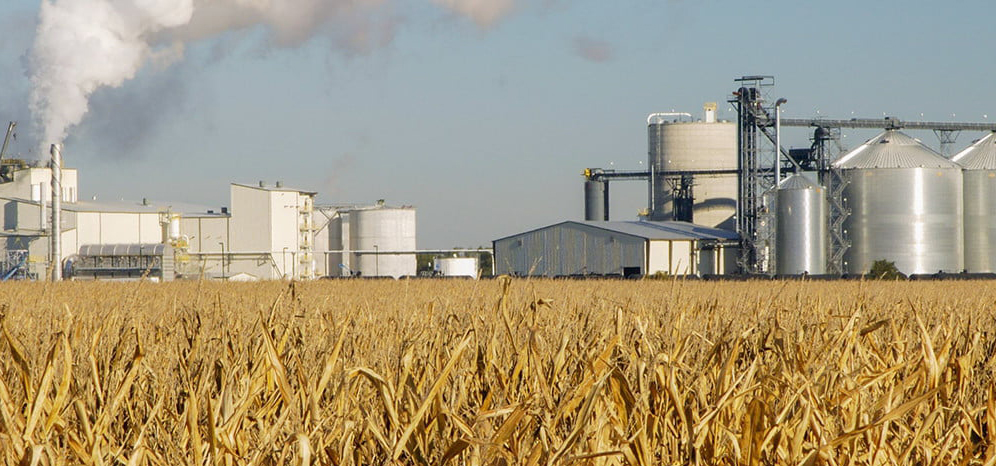The expansion of ethanol and other biofuel production from 2008-2012 has triggered the conversion of an estimated 7 millions of acres of mostly grasslands, and a smaller number of wetland, shrub, and forest acres, to predominantly corn and soybean production. In the course of doing so over just five years, renewable fuels-driven land conversion released 30 Tg of CO2 equivalent emissions per year — about the same as adding 20 million new cars on U.S. roads.
(“Tg” stands for teragram of CO2 equivalent carbon emissions, an internationally accepted way to aggregate the impact on climate change stemming from the release of multiple greenhouse gases. A teragram of CO2 equivalent emissions [Tg CO2 Eq] equals 1012 grams, or one million metric tons.)
This is the major finding reported by a team based at the University of Wisconsin-Madison lead by Dr. Holly Gibbs.
State-of-the-art satellite imagery was used to quantify land use changes, and produce estimates of land conversion by state and former land use (grassland, wetlands, shrubland, and forest). Grassland conversion accounted for 87% of the increase in carbon emissions nationwide. Corn, soybeans, and wheat accounted for 85% of total emissions from newly converted cropland.
They estimated the percent of converted cropland used to grow feedstocks for corn ethanol and soy biodiesel, and the loss of carbon per acre, by state, from land use conversion. As many other research teams have reported, the largest source of lost carbon came from degradation of long-term stocks of soil organic matter, an essentially unavoidable outcome when such lands are converted to intensive crop production.
South Dakota, Texas, North Dakota, Missouri, Minnesota, Iowa, Kansas were the number 1 through 7 state in terms of total increase in carbon emissions, ranging from 3,262 Gg/year in South Dakota to 1,524 Gg/year in Kansas.
A news report on the Gibbs et al (2017) study by Lee Bergquist appears in the November 16, 2017 Milwaukee Journal Sentinel. It reports that about 10% of 143 billion gallons of gasoline came from ethanol in 2016. Renewable fuels production accounts for some 40% of the total U.S. corn crop.
A spokesman for the Washington D.C.-based Renewable Fuels Association criticized the study and said the estimates of land use conversion are “grossly overstated.” The Association claims that the expansion in corn production has come from the approximately 16% higher yields per acre since 2007, rather than land conversion.
For more data helpful in sorting out the conflicting claims over the climate change and other impacts of renewable fuels production, see today’s Hygeia Analytics blog. Or, see other climate change related content on Hygeia Analytics.
Sources:
Spawn, S.A., Lark, T.J., Gibbs, H.K. (2017). Summary: US Cropland Expansion Released 115 Million Tons of Carbon (2008-2012), presentation released at a National Wildlife Federation meeting in Ft. Worth, Texas.
Bergquist, L. University of Wisconsin study finds carbon emissions increase when land is converted into crops for ethanol, Milwaukee Journal Sentinel, November 16, 2017.

